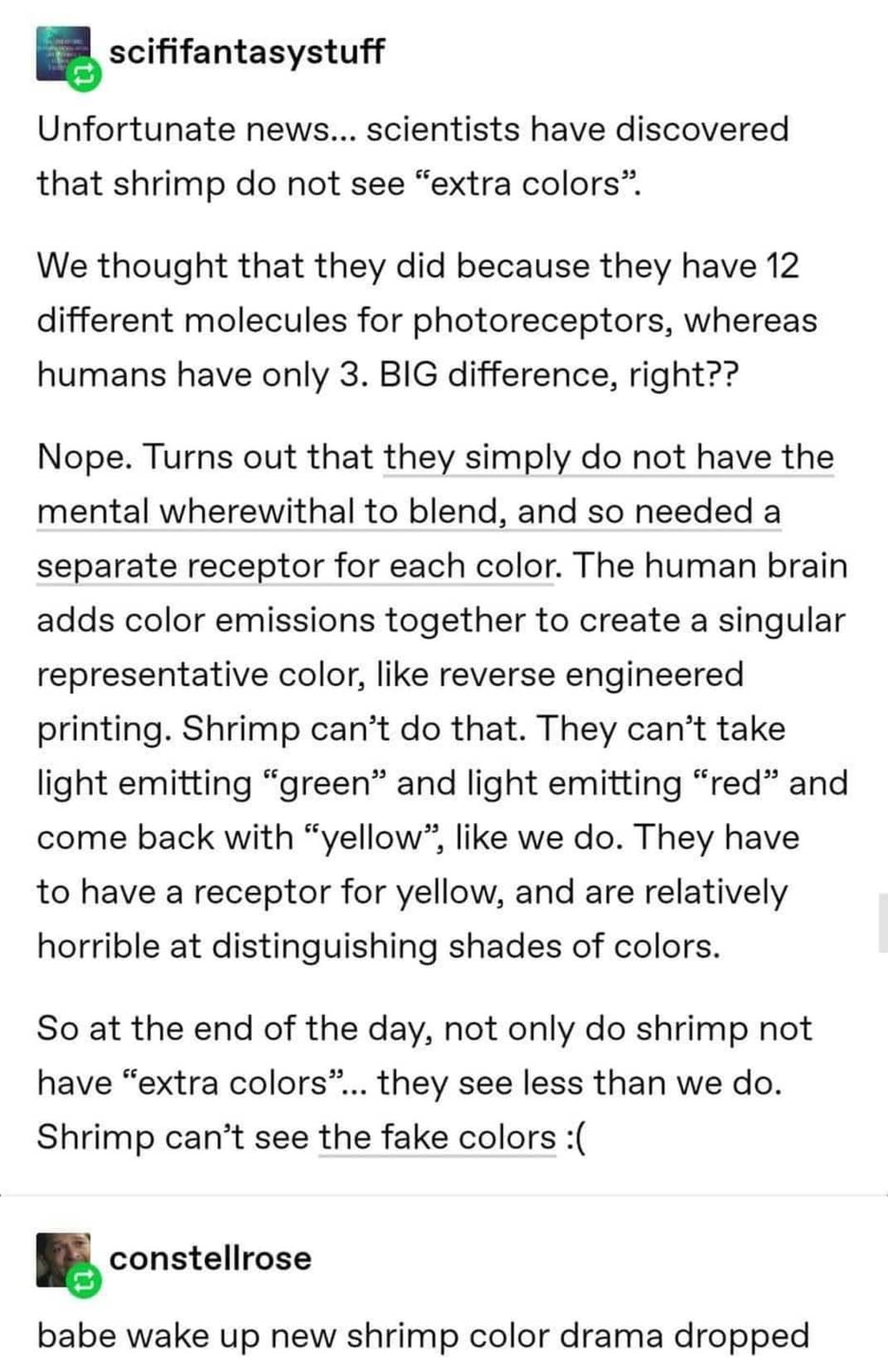this post was submitted on 23 Mar 2024
604 points (99.7% liked)
Science Memes
10940 readers
1924 users here now
Welcome to c/science_memes @ Mander.xyz!
A place for majestic STEMLORD peacocking, as well as memes about the realities of working in a lab.

Rules
- Don't throw mud. Behave like an intellectual and remember the human.
- Keep it rooted (on topic).
- No spam.
- Infographics welcome, get schooled.
This is a science community. We use the Dawkins definition of meme.
Research Committee
Other Mander Communities
Science and Research
Biology and Life Sciences
- [email protected]
- [email protected]
- [email protected]
- [email protected]
- [email protected]
- [email protected]
- [email protected]
- [email protected]
- [email protected]
- [email protected]
- [email protected]
- [email protected]
- [email protected]
- [email protected]
- [email protected]
- [email protected]
- [email protected]
- [email protected]
- [email protected]
- [email protected]
- [email protected]
- [email protected]
- [email protected]
- [email protected]
- !reptiles and [email protected]
Physical Sciences
- [email protected]
- [email protected]
- [email protected]
- [email protected]
- [email protected]
- [email protected]
- [email protected]
- [email protected]
- [email protected]
Humanities and Social Sciences
Practical and Applied Sciences
- !exercise-and [email protected]
- [email protected]
- !self [email protected]
- [email protected]
- [email protected]
- [email protected]
Memes
Miscellaneous
founded 2 years ago
MODERATORS
you are viewing a single comment's thread
view the rest of the comments
view the rest of the comments

but then they can still set colors, that we don't. Or at least there are some colors they can differentiate between, that we can't.
e.g if they have a receptor for orange, yellow and red, then can differentiate between pure orange and orange that is 50% red and 50% yellow.
So both is true: We have more colors (because of brain-things), but they still have some colors, that we don't (because of receptors).
Is this how colors work? Would we not just end up with the same result, with the Shrimps just using their one receptor to sense it, and us using ours to blend it into the same color?
Edit: thank you guys for the explanations
We can both detect orange light, but the shrimp can also detect red light mixed with yellow light. We get tricked into also seeing orange, despite no strictly orange light being there.
Think of it like sound. If we heard sound like we see light, we would hear a chord as identical to a tone somewhere in the middle of those notes. Mantis shrimp can see chords of light without any mixing, seeing both colours rather than just a colour somewhere in between.
Pink is one of the extra fun ones. You'll notice that there is no pink in a rainbow, but most all the other colors are there. Even showing things like a bit of all the indigo and purples and blues and oranges as it blends from one bigger color to the next. It's all by reading electromagnetic wave lengths of reflected light and the brain processing it and assigning a color to it. This also means that there's no way to prove that the color you perceive as being blue, for instance, is the same color as what anyone else sees as blue. Your brains version of what blue looks like may be completely different.
But pink. Pink is it's own set of weird. At no point across the visible spectrum of light is there a wavelength size that is pink. The longest visible waves of light are red and it works its way down to shorter and shorter waves until it gets to violet.
So what is pink? An imaginary color your mind made up when it receives wavelengths of the longest area of color (the reds) and the shortest (the violets/purples) at the same time. That's pink. There is no real way for your mind to mix those wavelengths to make any known color, so your mind just says "fuck it" and made one so it could interpret that nonsense.
Wait until you hear about how the colors white, brown, and the line of purples (purple/magenta/rose) work...
It is how color works given our particular limitations. RGB and CMY only work because of our eyes, not because of nature. If somehow we could extract the frequency spectrum of the light that reaches our eyes we could know the chemical composition of some things when burned, particularly of the sun. On the other side, we are tricked into believing our screens can produce all possible colors when in reality they can produce only three.